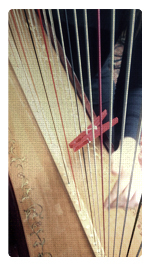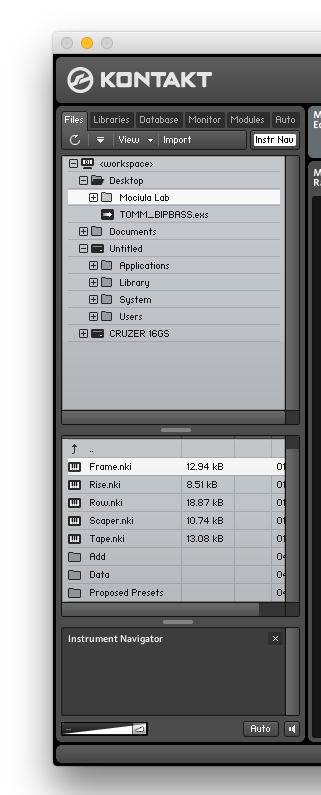Buy Grand Harp, get a free gift with purchase:
Silky Symphonic Nylon

The Grand Harp or better known as Concert Harp or Pedal harp is a large modern harp, designed primarily for classical music. The Grand Harp is a descendant of ancient harps such as a Celtic Nylon Harp. The harp found its early orchestral use as a solo instrument in concerti by many baroque and classical composers. It began to be used in symphonic music by Hector Berlioz.
The Grand Harp has a wide range of tones which is six and a half octaves (47 strings) starting typically from C 1 and ends up at G 7. The lowest strings are made of copper or steel-wound nylon, the middle-lower strings of gut, and the middle to highest of nylon, or more or all gut.
Articulations

The normal and typical way to play the Grand Harp is to play it with the fingertips of the first four fingers, but there are a lot more kinds of playing techniques available. In our version of the Grand Harp we concentrated on six different articulations which are:
- Plucked: Plucking the strings with the fingers is the principal technique
- Fingernail: That articulations creates a sharp and slightly penetrating sound. You produce that by plucking the strings with fingernails
- Prè de la Table: Près de la table produces a dry and nasal sound. The sound is sometimes compared to that of the Japanese koto or the guitar. To produce a pré de la table sound the fingers pluck the string in a normal manner but close to the soundboard
- Xylophonique: Xylophonique is a muted sound with a clearly distinguished pitch. It sounds wooden dry and percussive. To produce xylophonic sounds one hand mutes the strings by pressing them with the fingers close to the soundboard. The other hand plays the strings normally
- Prepared: This prepared articulation produces a dissonant and percussive sounds which is best suitable to produce avant-garde or experimental sounds and noises. We prepared all the the strings with brackets and paper which had the effect that the sound was muted as well as a weird vibrating noise was added to it
- Harmonics: The Harmonics (flageolet) gives a very warm and gentle sound. It is a popular effect in harp music

Content
As always we set a high focus on capturing the notes in a very realistic and organic way, thus we recorded the Grand Harp with several big condenser around the instrument. All main articulations are provided in four times round robins and up to 5 velocity layer, recorded in stereo 24 Bit. Only the Harmonics articulation was recorded in one round robin.
The Grand Harp comes up with a very gentle and warm feel. It sounds realistically and inspiring.
We have included all six articulations in one patch so that the user can easily and quickly change the articulation. You can do that either by mouse or keyswitches. Furthermore we added reverb and sustain control sliders as well as a tiny but powerful arpeggio with a separate voicing options and a very useful glissando mode. Finally we added an auto-velocity button which sets the note length automatically. This is extremely handsome.
Features
- One complex Grand Harp instrument
- 6 articulations
- Six presets and snapshots
- approximately 1000 Samples
- 1.3 GB of compressed data
System Requirements
- The FULL Version of Kontakt 5.6.8 or higher is required.
Important Notes:
- The FULL Version of Kontakt 5.6.8+ is required in order to use this instrument.
- You will be stuck in DEMO MODE if trying to use this instrument in the FREE Kontakt Player.
![]()
Mociula is used as the example:
1. Download the software folder from your User Account.
2. Unzip and extract the folder within and save it to a computer destination/folder of choice.
3. Launch Kontakt and click 'Browse' > Select 'Files,' which is located at the top left hand corner of Kontakt's interface.

4. Locate the instrument folder from the computer destination/folder that you saved it to > Select the Instruments sub-folder.

5. Once you locate the instrument.nki file, drag and drop it into the blank space which is available on the right hand side of Kontakt's interface.

6. Your instrument is now loaded into Kontakt and ready-to-use!

